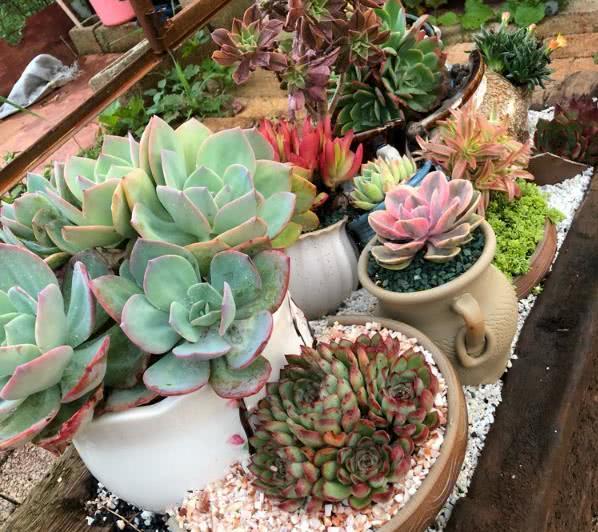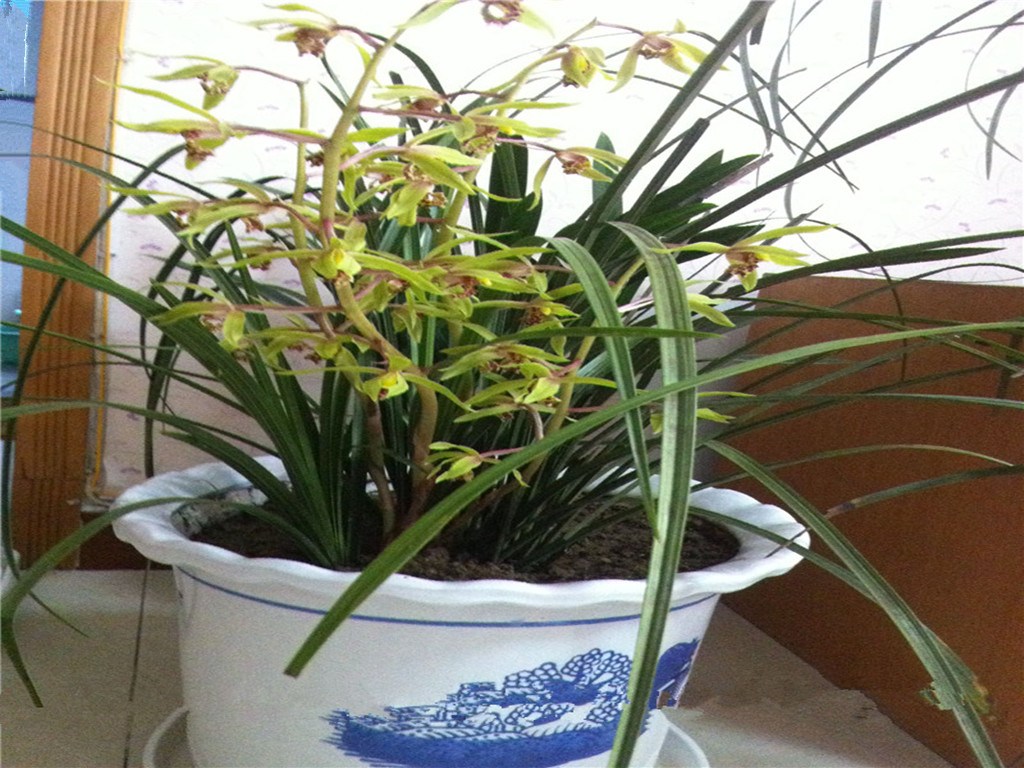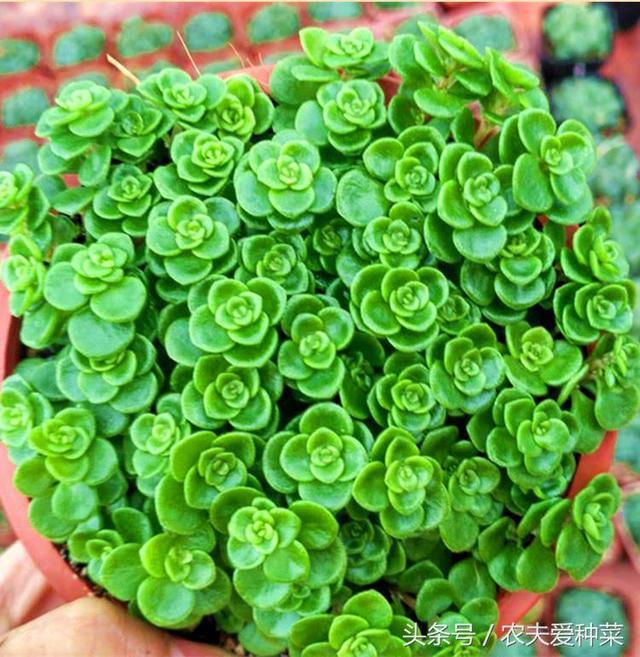Most succulent plant pests choose this time to spray to achieve effective control.

Succulent leaves can indeed absorb water, fertilizers, chemicals and so on, but when is the most effective? Think about the characteristics of sedum acid metabolism. Closing stomata during the day (high temperature) is the most effective only when the stomata are opened, that is, no matter spraying water or spraying, it is the most effective at night. There is also a very strong evidence of this. Australia has tried its best to kill cactus, spray, cannon and biological control. In the process of spraying, it has come to the conclusion that spraying at night is the most effective, because the cactus is also the metabolism of sedum acid, and the stomata are opened at night, indicating that the cactus stomata still play a major role in the material exchange between leaves and the outside world.
Whether spraying medicine or water, spraying at night is the most effective, especially on a cool night, if the temperature is too high, the stomata may not open. This may also partly explain why sometimes succulent succulent plants suffer from bacterial pests (not pests, which are not much different, and contact killing is more effective), and spraying is less effective. In the past, most people chose to spray in the evening in order to worry about drug injuries. the effect in other seasons may be good, but the summer evening is still very hot, which may affect the effect. Note that just because spraying at night is the most effective does not necessarily mean it is effective. Especially in summer, the stress resistance of succulent plants may have been destroyed by high temperature, so that they are vulnerable to a variety of germs.
The insect pest problem of succulent plants is quite common, and there are many kinds of shell insects, which are covered with a waxy hard shell, showing a round or oval shape, because it is protected by a hard shell, and once introduced, it is not easy to drive out. The harmful varieties are cactus, Euphorbiaceae, Liliaceae, apricot, jade and so on. Scale insects reproduce rapidly, each adult lays nearly 100 eggs at a time, twice a year, the eggs are powdery, and after drying and cracking, they float away with the wind and are scattered on the stems and leaves of plants everywhere. The adults are hatched in case of water and humidity at high temperature, and the shell has not yet been formed at this time, which is the best time to destroy. Treatment is also available, when the number is small, you should immediately remove with bamboo sticks and toothbrushes, isolate plants with worms to avoid transmission, and wash them with a brush dipped in nicotine sulfate diluent or alcohol to kill larvae and eggs.
If you find that some leaves suddenly blacken and are covered with black mold, it must be "coal fouling". As it may cause the whole plant to blacken and rot, if you find it, you should remove the diseased leaves in time and strengthen ventilation is the key. At the same time, we should do a good job of insect control and spray some fungicides. There are also some inexplicable leaf drop phenomenon, the stem or leaf root blackened, or has not yet blackened, but a little touch, the leaf fell. This is also a phenomenon of fungal infection. Think about whether it is not ventilated or watered too often these days. This situation is very easy to happen in summer, plant materials must be selected with good air permeability.
Xiaohei Fei is a common black flying insect in flowerpots. Most of the succulent ones found in Xiaohei are lotus genera of crassulaceae, which like to eat humus, larvae will also eat fleshy seedlings, and will also gnaw on the roots of plants, causing diseases caused by wound infection. Treatment method: Xiaohei likes to be wet and afraid of dry, and soil moisture is the key factor affecting adult Eclosion. Xiaohei can soak the basin with Huasheng (or dimethoate) when flying, the larvae have strong drug resistance, and the place where plants are planted is well ventilated and do not expose humus soil. it is best to cover the nutritious soil with vermiculite or river sand. There is also a small recipe to try, mix the soil with mosquito incense ash, which can kill Xiaofeihei, and the main ingredient of mosquito incense is pyrethroid.
When the climate is warm and humid, snails and slugs will increase and reproduce quickly. These software bugs can be found in both urban and rural areas. Have you grown snails? They all hide in damp and dark places during the day and come out to look for food at night, not only eating young branches and young leaves, but also old stems and leaves. Treatment: remove weeds, garbage, tiles and other deposits around the pot, keep it clean and prevent it effectively; or, install screen isolation around the pot, or buy a special medicine to kill snails, or sprinkle lime or salt next to the flowerpot. Don't sprinkle the soil.
Here is a gathering place for succulent plant lovers, sharing succulent maintenance skills, welcome to follow and exchange.
- Prev

These three kinds of watered orchids are to poison potted plants. no wonder your orchids often have yellow leaves and rotten roots.
These three kinds of watering orchids are to "poison" potted plants. No wonder your orchids often have yellow leaves and rotten roots. The conservation of orchids should be treated separately throughout the year in order to make you have a more ideal orchid. He is not such a hot summer, nurturing orchids.
- Next

This kind of flower needs to be watered less and live on the dirt, and it will soon burst the favorite of lazy people.
Pill-leaf perennial grass is a succulent plant of the Sedum family, also known as round-leaf perennial grass, a very common pot protection grass, planted with a cluster, will soon burst the shed, the perennial green leaves and flesh, potted ornamental is very pleasing to the eye. Pill-leaf perennial grass.
Related
- Wuhan Hospital Iron Tree Blooming Result Was Instantly Frightened by the Gardener Master
- Which variety of camellia is the most fragrant and best? Which one do you like best?
- What is the small blue coat, the breeding methods and matters needing attention of the succulent plant
- Dormancy time and maintenance management of succulent plants during dormancy
- Minas succulent how to raise, Minas succulent plant pictures
- What are the varieties of winter succulent plants
- How to raise succulent plants in twelve rolls? let's take a look at some experience of breeding twelve rolls.
- Attention should be paid to water control for succulent plants during dormant period (winter and summer)
- Watering experience of twelve rolls of succulent plants
- Techniques for fertilizing succulent plants. An article will let you know how to fertilize succulent plants.

